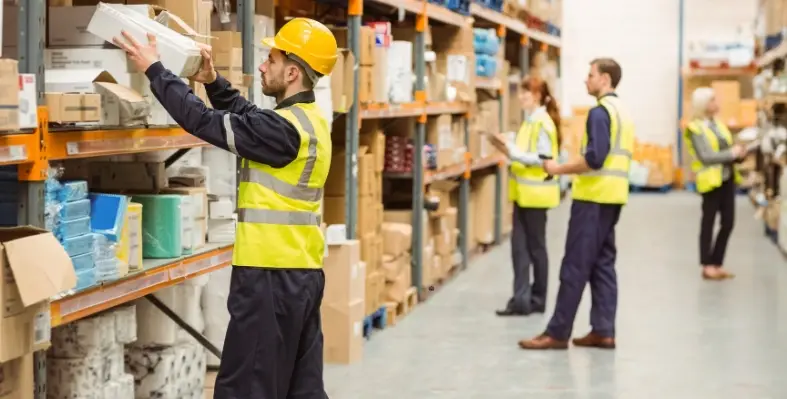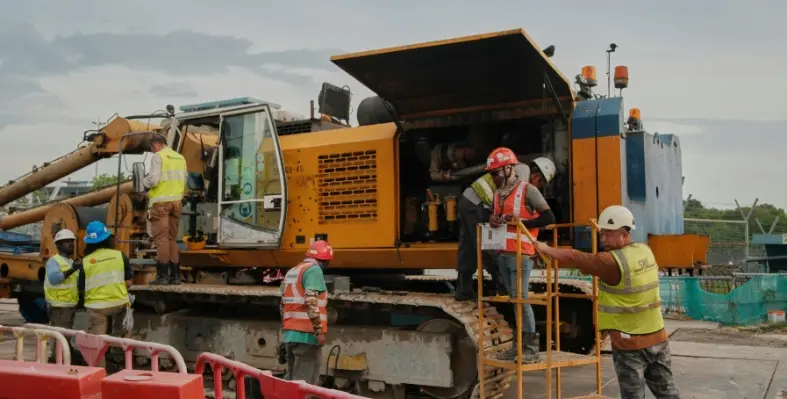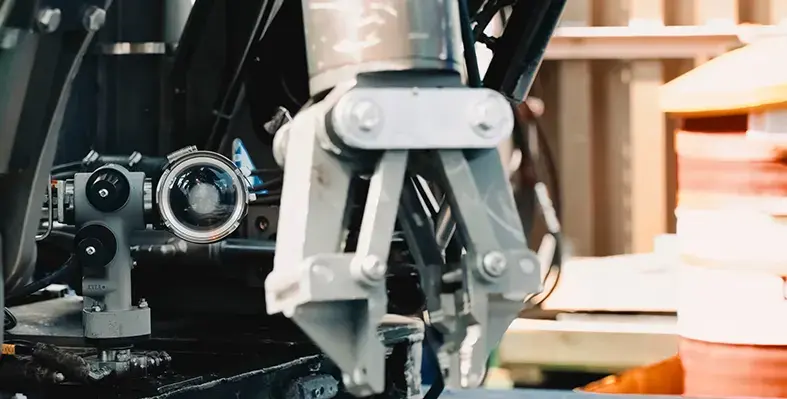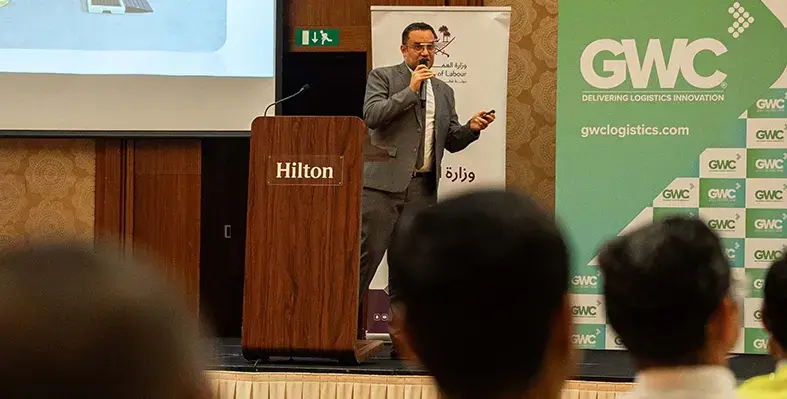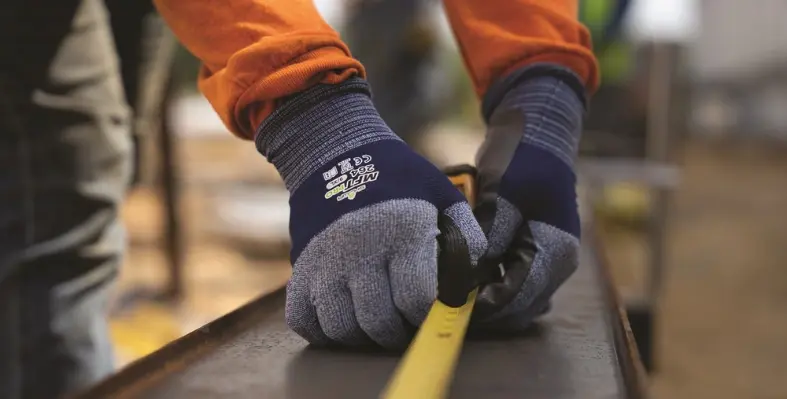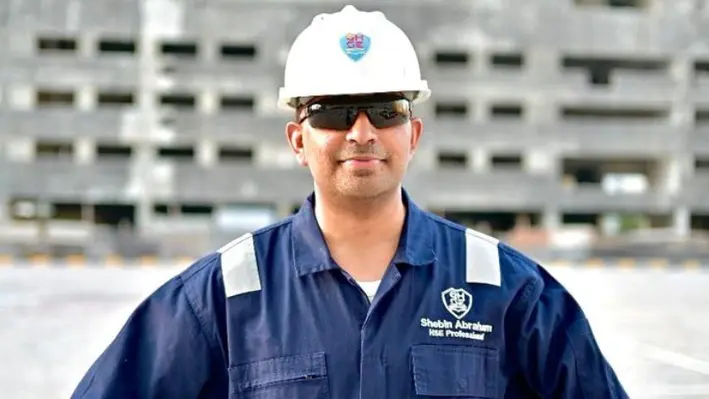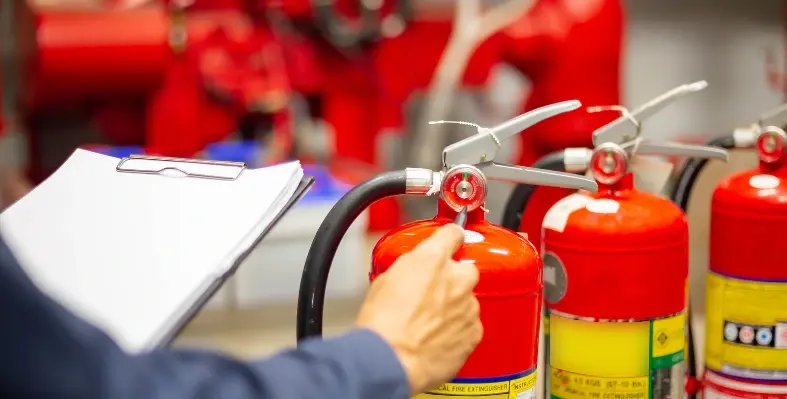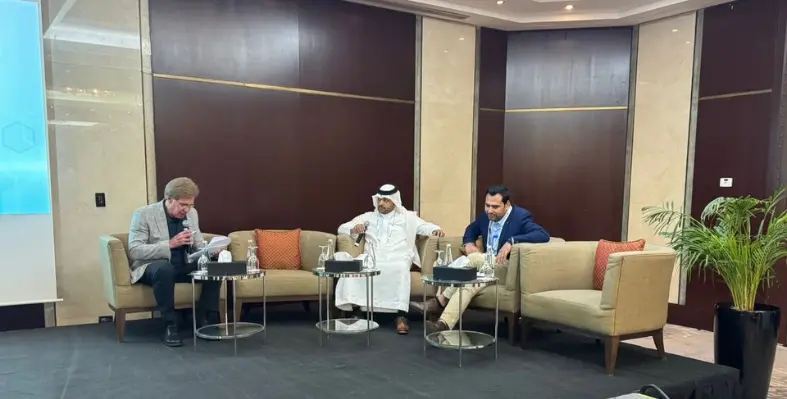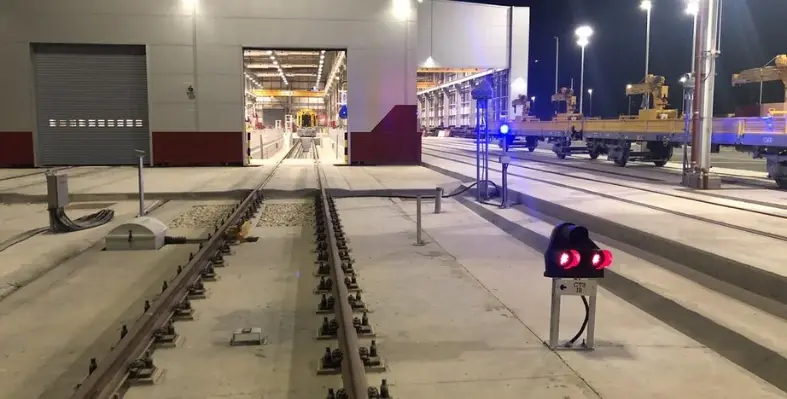Industrial Insights
Industrial Insights
- Details
- Sania Aziz
- Industrial Insights
- Date: 9 October, 2025
- Year: 2025
Despite advances in awareness and technology, manual handling injuries remain one of the leading causes of workplace absence and compensation claims in the UK, the Royal Society for the Prevention of Accidents (RoSPA) said.
According to the Health and Safety Executive (HSE), 543,000 workers suffered from musculoskeletal disorders (MSDs) in 2023-2024, resulting in 7.8 million lost workdays. Many of these MSDs are directly linked to poor manual handling practices, with 32% of work-related ill health attributed to MSDs and 17% of non-fatal injuries resulting from lifting, carrying, or handling activities.
Once organisations have taken steps to avoid, assess, and reduce manual handling risks, it is crucial to provide thorough and ongoing training for all employees involved in essential handling tasks. One of the most common mistakes is offering training only once, typically at induction, without any follow-up. Good practices can fade quickly under real-world working pressures, and without regular refresher sessions, unsafe habits and injury risks increase.
Key challenges
Another frequent issue is failing to tailor training to specific sectors or roles. Generic training that does not reflect the tasks employees perform—whether in a warehouse, on a construction site, or in care settings—fails to connect and protect staff effectively. Using real-life scenarios and investing in trainers who can customise sessions to different departments improves relevance and impact.
Organisations also risk relying on outdated techniques that do not align with current understanding of biomechanics and risk. Working with qualified trainers who follow up-to-date HSE and evidence-based guidance, and regularly auditing training materials, ensures employees learn safe and effective methods.
It is equally important to include team leaders and supervisors in training. Managers influence workplace behaviour and, if untrained, unsafe practices can become the norm. Training supervisors to recognise poor technique, correct unsafe practices, and support injured staff fosters a culture of safety rather than simply enforcing productivity.
Finally, organisations often overlook the need to develop internal expertise. Relying solely on external trainers can be inefficient, especially in industries with high staff turnover. Identifying internal staff to complete recognised qualifications allows consistent, cost-effective delivery of manual handling training across teams.
Manual handling training is not just a compliance requirement, it is essential for protecting workforce wellbeing, maintaining productivity, and reducing costly claims. Investing in the right training, at the right time, and for the right people can significantly reduce both risk and cost. The information in this article is provided by
- Details
- Sania Aziz
- Industrial Insights
- Date: 8 October, 2025
- Year: 2025
The Construction Leadership Council (CLC) has launched a public consultation to gather views on the underlying causes of poor mental health in the construction industry and identify effective ways to reduce them, according to the British Safety Council.
The initiative follows a series of focus groups held across England in collaboration with Mates in Mind and the University of Warwick. It seeks to explore both the root causes and practical measures that could help improve wellbeing in one of the UK’s most high-risk sectors for mental health issues.
Part of the CLC’s wider Mental Health Project, the consultation is being led by senior civil servant Stuart Young, head of stakeholder engagement at the Department for Business & Trade, alongside Sam Downie, managing director of Mates in Mind; Henrietta Frater, head of HSE and Wellbeing at the Crown Estate; and representatives from Mace, BAM, and the University of Warwick.
During earlier discussions, Warwick researcher Dr. Sophie Clohessy outlined key challenges such as low job control, rigid hierarchies, frequent conflict, and lack of role clarity. “The work is often physically demanding, long, and far from home – all of which add strain,” she said. Dr. Clohessy also noted that the sector has a higher prevalence of neurodiversity, which is often overlooked in workplace policies.
The consultation will inform a 'Joint Code of Practice for Managing Mental Health in Construction', scheduled for publication in February 2026.
The initiative follows a series of focus groups held across England in collaboration with Mates in Mind and the University of Warwick.
- Details
- Sania Aziz
- Industrial Insights
- Date: 7 October, 2025
- Year: 2025
In a first divestment development for FrontRow Energy Technology Group, its subsidiary, WellSense, a rapid fibre-optic well diagnostics provider, has sold FiberLine Intervention licence to oilfield services company, Halliburton
The agreement terms secure a global licence for Halliburton to deploy WellSense FiberLine Intervention (Fli) technology for use in well stimulation monitoring.
A FrontRow Energy Technology Group company, WellSense, will continue to deploy the technology globally for all other oil and gas applications, including well plug and abandonment (P&A), well integrity and leak detection, as well as carbon capture, utilisation and storage (CCUS).
Annabel Green, CEO of WellSense, said, “The successful completion of this deal is a defining moment for WellSense and for our parent company, FrontRow Energy Technology Group. Not only is it a strong industry endorsement of our technology and the value it delivers, but also our business model of bringing new and innovative solutions to market.
“Our unique bare fibre dynamic despooling technology delivers superior data quality for a detailed subsurface understanding. Unlike other well monitoring techniques it provides a lightweight offline intervention solution with disposable probes for significant efficiency savings and reduced risk.
“Meeting the complex challenges of upstream oil and gas requires the adoption of technologies that fundamentally improve how the industry operates. This agreement is the result of a decade of focused innovation, collaboration and delivery and I would like to extend my sincere thanks to all our employees, past and present, whose dedication has built the strong foundation that made this success possible.”
Steve Kent, CEO of FrontRow, said,“This deal is a major milestone for FrontRow and is a clear example of how UK-born innovation can solve industry challenges and attract global attention.
“This is FrontRow’s first commercial licence sale and a landmark in our journey. It demonstrates that innovation, when nurtured with the right expertise and support, can deliver technical success as well as real commercial value.”
- Details
- Sania Aziz
- Industrial Insights
- Date: 6 October, 2025
- Year: 2025
Qatar's Ministry of Labour, in cooperation with Gulf Warehousing Company Q.P.S.C (GWC), organised an awareness seminar on the safe storage and handling of hazardous materials.
The session was held with the participation of the General Directorate of Civil Defence’s Prevention Department, the Ministry of Environment and Climate Change’s Chemicals and Hazardous Waste Department, and academic advisers from the University of Doha for Science and Technology.
The seminar aimed to enhance understanding of occupational safety standards and equip participants with preventive measures to reduce risks during storage and transportation operations.
Nasser Al Hajri, Chief People Officer at GWC, thanked the Ministry of Labour for its efforts to promote workplace safety, highlighting that the health and safety of employees remain the company’s top priority.
He emphasised that GWC ensures comprehensive safety training, proper use of personal protective equipment, regular emergency drills, and a culture of hazard prevention and awareness supported by strict adherence to preventive measures.
“At GWC, we follow stringent international safety protocols to ensure the safe storage of hazardous materials,” said Al Hajri.
“This involves regular employee training on safe handling practices, emergency preparedness, gas monitoring alarms, fire alarms, secondary containment systems, routine maintenance, risk assessments, and continually reinforcing awareness of occupational health and safety.”
Better HSE practices
As part of its proactive safety culture, GWC operates a Safety Observation Reporting (SOR) System, which allows employees to report potential risks or unsafe conditions in real time. This initiative helps the company identify hazards early and implement corrective actions to maintain a safe working environment.
Al Hajri added that GWC continuously strengthens its occupational safety and health standards by integrating them into its daily operations and promoting awareness of safety, health, and environmental management systems. The company focuses on improving risk assessments, operational controls, and monitoring of key performance indicators related to workplace safety, health, and security, all aligned with international best practices.
GWC is one of the region’s leading logistics providers, offering end-to-end supply chain solutions and managing over 4mn sq m of logistics infrastructure. The company operates specialised hubs for sectors such as oil and gas in Ras Laffan and Mesaieed industrial cities, serving both local and international clients while maintaining its commitment to safety, sustainability, and operational excellence.
- Details
- Sania Aziz
- Industrial Insights
- Date: 3 October, 2025
- Year: 2025
The International Code Council (ICC) continued its robust program of industry engagement in September, having participated earlier in two of Saudi Arabia’s leading events: the Building Envelope Design and Insulation Conference (BEDIC) and the MEP International Conference (MEPIC).
The month concluded with ICC’s participation in Intersec Saudi Arabia at the end of September. Together, these platforms underscored ICC’s active role in advancing the Kingdom’s sustainable construction sector, strengthening building safety, and promoting best practices in efficiency and innovation.
Paul Sincaglia, Chief Fire Protection Engineer at ICC, and Beth Tubbs, Vice President of Codes Development at ICC, participated in Intersec Saudi Arabia, the Kingdom’s premier platform for the fire, safety, and security industry.
The event drew more than 27,000 professionals, including government leaders, agencies, and organisational heads. Discussions explored both the human and regulatory dimensions of building safety in Saudi Arabia.
One focus highlighted women breaking new ground in fire protection and life safety, showcasing how leadership and innovation are reshaping a traditionally male-dominated field and inspiring future professionals.
Additionally, there was a discussion examining the latest updates to the Saudi Building Code (SBC), with specific insights on the Saudi Fire Code (SFC), outlining their impact on industrial facilities and offering strategies for effective compliance. Together, these sessions highlighted the Kingdom’s progress in advancing both inclusion and regulatory operational excellence in the built environment.
ICC worked closely with regional partners to promote excellence in design and construction.
Through strategic collaborations with the Saudi Building Code Center (SBCC) and the Ministry of Municipalities and Housing (MOMAH), ICC supported the Kingdom’s efforts to develop and implement building codes tailored to local needs and priorities.
ICC welcomed visitors and industry professionals at Intersec to exchange insights and collaborate with global experts on shaping the future of safe, resilient, and energy-efficient buildings.
“Saudi Arabia is rapidly advancing its fire and life safety framework as part of building smarter and more resilient cities,” said Mohamed Amer, MENA managing director at ICC. “At Intersec, ICC is committed to sharing global expertise in fire protection, building safety, and risk management, while showcasing innovative solutions that enhance resilience and support the Kingdom’s Vision 2030 ambitions.”
- Details
- Sania Aziz
- Industrial Insights
- Date: 2 October, 2025
- Year: 2025
SHOWA is set to make a strong impact at A+A 2025 in Düsseldorf, where it will unveil a wide range of new product innovations alongside its latest sustainability and service initiatives.
With innovation as the focal point of this year’s stand, the company is introducing 16 new gloves designed to raise performance standards across industries that demand both safety and efficiency.
Among the headline launches is the SHOWA CC700, a glove that successfully combines chemical and cut resistance with high dexterity, meeting a challenge long faced by sectors such as mining, construction and chemicals.
Also making its debut is the TEMRES 282-02, a thermally insulated, breathable and water-resistant glove engineered for cold and wet environments.
Another key innovation is the S-TEX Alpha, which showcases SHOWA’s cutting-edge use of tungsten-based fibres to deliver Level F cut protection without sacrificing flexibility. Visitors will also see the MFT PRO line, which incorporates a microfibre liner for enhanced breathability and comfort while maintaining durability.
Key products
The new Product Demo Hub will allow visitors to experience these technologies in action. Demonstrations will simulate real-world conditions, including chemical and cut resistance trials with the CC700, knife-based testing of the S-TEX Alpha, breathability comparisons featuring the MFT PRO, and a showcase of SafeDoff Technology, which enables safe removal of contaminated gloves.
Alongside new products, SHOWA is underlining its environmental and social responsibility with the launch of ‘SHOWA In Balance’, a global sustainability report detailing progress on reducing the environmental footprint of glove manufacturing and the integration of sustainable materials across its range.
In addition, SHOWA will highlight two service platforms designed to help employers strengthen safety culture and compliance. Sentinel by SHOWA offers on-site risk assessments and structured glove trials, while ChemRest provides detailed permeation data to guide safe glove selection.
Backed by SHOWA’s chemical research laboratories, ChemRest supports professionals working with hazardous substances by enabling more informed decisions in protective equipment.
“As the scale and complexity of workplace risks continue to evolve, our role is to provide solutions that protect workers while also addressing the environmental responsibilities our industry faces,” said Tony Lynch, vice president EMEA & USA at SHOWA. “A+A provides the ideal platform to demonstrate not only our innovations but also our commitment to sustainability and services that deliver long-term value.”
- Details
- Sania Aziz
- Industrial Insights
- Date: 1 October, 2025
- Year: 2025
The National Fire Protection Association (NFPA) has entered into a Memorandum of Understanding (MoU) with MODON, the Saudi Authority for Industrial Cities and Technology Zones, to advance fire safety across the Kingdom’s industrial facilities.
The agreement was formalised at Intersec Saudi 2025 in Riyadh, with Eng. Ali Al-Oliwah, Director of Safety and Security at MODON, and NFPA President and CEO Jim Pauley signing the MoU.
The partnership focuses on building institutional capacity, improving fire prevention measures, and embedding a culture of safety within industrial operations.
Through joint initiatives, NFPA and MODON will promote fire safety education, exchange expertise, and expand research efforts, drawing on the NFPA Fire & Life Safety Ecosystem as a foundation for their work.
Enhancing prevention practices
Planned activities include sharing fire safety research relevant to industrial zones, hosting conferences and training programmes, and providing certification opportunities for MODON staff and industry partners. In addition, both organisations will work to raise awareness of NFPA codes and standards while equipping stakeholders with the knowledge and tools required to strengthen fire prevention practices.
This collaboration marks a milestone in Saudi Arabia’s efforts to reinforce industrial safety. By pooling resources and expertise, NFPA and MODON aim to introduce stronger prevention frameworks, improve emergency response strategies, and set higher benchmarks for industrial fire safety, supporting both national safety objectives and the Kingdom’s long-term development vision.
“We are honoured to join with MODON in elevating safety standards within industrial zones,” said Jim Pauley, president and CEO of NFPA. “This collaboration will be instrumental in developing comprehensive fire prevention guidelines, conducting thorough incident investigations, and providing expert training to MODON's workforce. By sharing NFPA standards, we aim to significantly reduce risks within industrial facilities of the Kingdom.”
- Details
- Sania Aziz
- Industrial Insights
- Date: 30 September, 2025
- Year: 2025
HSE Review speaks with Shebin Abraham, founder of QHSE Directory, about the region’s evolving safety culture, the rise of digital tools, and how his platform is connecting professionals and solutions worldwide. Read on:
Having been in the region for close to two decades, how would you describe the HSE landscape has evolved in recent years?
What was once largely seen as a compliance requirement has steadily evolved into a central core value for organisations and their people. Stronger and more clearly defined legal frameworks have reinforced accountability and consistency across industries, laying a solid foundation for progress.
At the same time, the region has become a hub for international safety organisations bringing in advanced HSE solutions, which has fostered both a healthier workplace culture and a more competitive safety ecosystem. Post-COVID-19, the pace of change has accelerated. Safety digital tools, AI safety, and VR HSE Training are no longer viewed as “future possibilities” but are now part of daily safety practice.
Equally important is how the definition of “occupational health” has broadened. Organisations today are giving more attention to mental well-being, stress and fatigue management, and work–life balance. This holistic approach is shaping workplaces that care not only about physical safety but also about the overall quality of life.
Another inspiring change is the rise of highly competent multicultural HSE professionals across the region. Their expertise has elevated standards and cultivated a culture that is adaptive, innovative, and future-ready.
What are some of the key HSE initiatives that leading organisations in the region are focusing on today?
Artificial Intelligence, virtual reality, and advanced safety software are no longer viewed as experimental tools, they are becoming central to how organisations make decisions in real time and manage risks more effectively on the ground. My recent visits to exhibitions and conferences clearly highlighted this transformation, the conversation has moved from “if” to “how fast” organisations can adopt these safety solutions.
Bigger organisations are developing their own AI safety platforms to predict and prevent incidents, while others are building customised VR systems to simulate high-risk scenarios and train their workforce more effectively. What is equally encouraging is the growing demand from end clients too. They are no longer satisfied with contractors meeting minimum compliance. Instead, they expect their contractors to demonstrate an adaptive mindset and integrate technology into their safety management systems.
This shift signals a new era in HSE, one where leadership is measured not only by compliance but by innovation, foresight, and the ability to create safer workplaces through technology.
Could you share more details about the QHSE Directory platform and what sets it apart?
I have always believed that the health and safety profession, which has been evolving for more than 200 years, holds the power to save lives and transform industries. Over time, I noticed something very significant. It is not that good safety solutions don’t exist, in fact, there are thousands of innovative and effective HSE products and services available around the globe. The real challenge is that many of these solutions never reach the professionals and organisations that need them most.
In my own experience, I faced this gap many times. When I needed a solution, it wasn’t readily available, or I simply didn’t know where to find it. That sparked the vision for www.qhsedirectory.com, a global platform created to bridge this gap.
Since 2021, QHSE Directory is designed to connect two critical groups. HSE professionals searching for reliable, high-quality solutions, and solution providers eager to reach the right audience. It’s not just a listing platform but it’s a mission-driven safety platform to make access easier, faster, and more transparent.
What sets QHSE Directory apart is the purpose behind it. This isn’t just a business venture for me or it started as a business, it’s the result of a lifelong passion for occupational health and safety. My mission is to empower safety professionals, enable solution providers, and build a global safety ecosystem where safety innovation and people come together.
In your view, how can the wider HSE community benefit from engaging with this platform?
As an HSE professional who has worked in this region for close to two decades, I’ve often experienced the frustration of knowing that great safety solutions exist somewhere in the world, yet not being able to access them when I needed them most. That experience shaped my vision for QHSE Directory, a global platform that ensures solutions are not just created, but also reach the people and organisations that truly need them.
If you are an HSE professional, no matter where you are, this specialised safety platform is designed to support you throughout your career. For example, if a professional in Africa is searching for a solution that originates in the UK, QHSE Directory makes that connection possible.
What sets QHSE Directory apart is accessibility and choice. Big and small companies alike want to adopt modern safety technologies, but not every solution is available, accessible, or affordable. Our approach is to bring multiple options onto one platform, so if one solution is out of reach for a company, there are always alternatives. This creates flexibility, affordability, and a level playing field for organisations of all sizes.
The platform spans eight services: health and safety products, digital solutions, training companies, consultants, books, freelancers, conferences, and exhibitions.
My vision is simple but powerful: make the best safety solutions in the world accessible to every professional and organisation.
Looking ahead, what do you see as the major challenges and opportunities for HSE professionals in the region over the next decade?
We live in a society where the workforce belongs to different generations. Millennials, Gen Z, Gen Alpha, and the coming Gen Beta etc - each brings a different mindset to the workplace. Some are highly technology-driven, others are less so, and many fall somewhere in between. For HSE professionals, this is both a challenge and a gift. The challenge is ensuring that safety systems and cultures are inclusive and effective for everyone. The opportunity is to build an ecosystem where each generation’s strengths contribute to a stronger, safer workplace.
Another area that will demand attention is the pace of technology versus regulation. Technologies like AI, VR, and advanced digital solutions are evolving at lightning speed, while legal frameworks are often slower to adapt. This creates a gap, where innovation runs ahead of regulation. For HSE professionals, this means we must learn to responsibly harness new technologies, set internal benchmarks, and lead with foresight even before formal regulations catch up.
- Details
- Sania Aziz
- Industrial Insights
- Date: 30 September, 2025
- Year: 2025
FIREX Egypt 2024, the country’s leading fire safety exhibition, is taking place from 14-16 October at the Egypt International Exhibition Center in Cairo, alongside the 33rd edition of Egypt Energy.
The event highlights fire protection technologies and solutions, including fire prevention, detection, and extinguishing systems, emergency lighting, and risk management strategies for industrial and commercial facilities.
Organised by Informa Markets, the exhibition brings together over 180 exhibitors from 25 countries and expects around 10,000 visitors.
Sessions and forums focus on modern fire safety challenges, emergency preparedness, and industrial risk mitigation. A dedicated Women in Fire Safety reception highlights the role of women in the sector and promotes leadership development.
FIREX Egypt 2024 emphasises the adoption of advanced fire safety technologies and encourages knowledge exchange between government authorities, industry experts, and international suppliers, supporting improved occupational health and safety standards across the region.
Mark Ring, group director of the energy events at Informa Markets, said, "This year’s event captures the dynamic global shifts in renewable energy and fire safety, as global energy investments are projected to surpass US$3 trillion for the first time in 2024, with US$2 trillion allocated to clean energy technologies and infrastructure. This event serves as a key platform for exchanging ideas on global policies and market transformations, showcasing the latest innovations and technologies in this field, and reinforcing Egypt’s position as a regional leader in the energy sector."
Medhat Shawky, exhibitions manager at Informa Markets Egypt, said: "We’re thrilled to organise this event, which includes the only exhibition in Egypt dedicated to the fire safety sector, highlighting the importance of enhancing safety and protection standards in critical facilities. We are proud that the exhibition is supported by the Egyptian government, reflecting the vital role it plays in raising awareness about the latest fire prevention technologies and reaffirming Egypt’s position as a key supporter of innovation and advanced solutions in this field."
- Details
- Sania Aziz
- Industrial Insights
- Topic: HSE
- Region: Middle East
- Date: 29 September, 2025
- Year: 2025
At the recent HSE KSA Forum in Riyadh, industry experts engaged in a powerful dialogue about transforming workplace safety culture. The panel discussion offered profound insights into creating holistic approaches to employee well-being and safety engagement.
HSE Manager Mubarak Rashed set the tone early, quoting, "Coming together is a beginning, keeping together is progress. Working together is success." This philosophy underscored the panel's collaborative approach to safety management.
The conversation centered on three critical aspects of safety management: prioritising employee welfare, enhancing engagement, and developing effective leadership strategies. Larry Wilson, CEO of SafeStart emphasised the importance of understanding an organisation's current safety culture, noting, "You have to start with where you are now. Where you are now may not be ideal, but that's where you have to start."
Syed Mazhar, director HSSE Department at AlBawani, shared practical implementation strategies from his experience at the company. He introduced innovative engagement methods like monthly HSE pulse surveys available in multiple languages. "We have 20,000 people in our company," he explained, "and we apply monthly HSE pulse assessment surveys in seven different languages to ensure comprehensive feedback."
The panel developed comprehensive strategies for workplace safety. They introduced a supervisory HSE training program that initially revealed significant knowledge gaps, with 80% of supervisors failing the first assessment. By implementing translator support, practical assessments, and a buddy system, they transformed supervisor capabilities.
Mental health emerged as a crucial component. The experts shared examples of supporting employees through challenging situations, from providing mental health sessions after traumatic incidents to creating recreational opportunities that help workers recover and reconnect.
Transforming safety culture
A key breakthrough was integrating safety performance into performance evaluations, with 10-20% of increments tied to safety metrics. The approach goes beyond traditional compliance, focusing on creating an environment where employees feel genuinely valued.
The panel unanimously agreed that changing safety culture requires patience. Behavioral change doesn't happen overnight. Leaders must provide consistent support, create accessible communication channels, and demonstrate genuine commitment to employee well-being.
Accountability was another significant theme. The discussion challenged traditional blame-based approaches, advocating instead for a collaborative model where responsibility is shared across leadership levels.
The panel's most powerful message was simple yet profound: creating a strong safety culture is about seeing employees as whole individuals. It is not just about preventing accidents, but nurturing an environment of care, respect, and continuous improvement, the panel said.
For organisations seeking to transform their safety culture, the key takeaways are clear: listen to employees, provide comprehensive support, invest in training, create meaningful engagement channels, and lead by genuine example.
As Saudi Arabia continues to evolve its industrial landscape, these insights from HSE leaders offer a blueprint for building safer, more resilient workplaces that prioritise human potential and well-being.
The discussion concluded with a shared commitment to continuous improvement, demonstrating that effective safety culture is an ongoing journey of learning, engagement, and mutual respect.
- Details
- Sania Aziz
- Industrial Insights
- Date: 26 September, 2025
- Year: 2025
The UK must improve access to occupational health services if it is serious about reducing sickness absence and helping people back into work, according to a new report from IOSH.
The study highlights concerns among the workforce, with one in six employees doubting their employer would support them if they developed a long-term physical condition or disability. A further one in five said they would not expect adequate backing if faced with mental health challenges.
IOSH’s report, Fixing sick Britain: getting people back to work through good occupational health and safety, sets out a series of measures to close these gaps. Key recommendations include greater government investment in occupational health, targeted public health initiatives, stronger support for SMEs, and incentives for employers to promote healthy workplaces and work-life balance.
The report is being released ahead of IOSH’s fringe event at the Labour Party Conference, Healthy workers, stronger economy: Labour’s occupational health opportunity. Speakers will include Sir Charlie Mayfield, who is leading the Government’s Keep Britain Working Review.
IOSH argues that stronger occupational health systems are vital to complement workplace safety, with 2.8mn working-age people currently out of work due to ill health. The cost to businesses is estimated at £150bn annually, alongside additional strain on the NHS and welfare services.
Yet only 45% of the workforce currently has access to occupational health provision. In a YouGov survey of 1,100 workers commissioned by IOSH, nearly three-quarters said they want universal occupational health services available locally.
"The number of people unable to work due to ongoing health conditions shows we need to create the right occupational health and safety frameworks that focus on prevention, support good work and job design, and create supportive environments that accommodate people’s needs," said Ruth Wilkinson, Head of Policy and Public Affairs at IOSH.
“As part of this, we need stronger, more accessible occupational health services that can drive prevention strategies, promote good health and help people stay in work, as well as support return to work and rehabilitation when people do become ill. This can help to cut sickness rates, ease NHS and benefit pressures, and boost economic growth.
“We’re calling on the Government to invest in this area. And we don’t just want this to be something which benefits those employed in large organisations; this needs to cover smaller employers to ensure that people are able to remain healthy and safe and remain in work for the benefit of both themselves and the economy.”
- Details
- Sania Aziz
- Industrial Insights
- Date: 25 September, 2025
- Year: 2025
Zonegreen, a leading provider of rail safety solutions, is set to showcase its advanced technology at this year’s Global Rail exhibition in Abu Dhabi from 30 September to 2 October.
The event, organised by Etihad Rail and held at the ADNEC Center, will feature over 300 exhibitors from 40 countries.
At the exhibition, Zonegreen will present its full suite of depot protection solutions, including the flagship Zonegreen Depot Personnel Protection System (DPPS) and the Zonegreen Electronic Interlocking Solution.
The DPPS automates safety procedures to physically protect rail depot workers from unexpected vehicle movements.
Since its initial deployment in 2008 across three Dubai Metro depots, the system has been installed in three additional depots serving the Doha Metro in Qatar, safeguarding 22 maintenance roads across these state-of-the-art facilities.
“The exhibition will be an excellent opportunity to expand Zonegreen solutions' footprint across the globe, by making new contacts and learning more about forthcoming projects in the Middle East and Asia,” said Sebastian Baucutt, Zonegreen head of sales.
“Dubai Metro is renowned for its use of technology to operate the fastest, most effective and safest rail system possible. The part DPPS plays in this project is a fantastic reflection of the trust staff place in the system. Global Rail is a great opportunity to show other depot operators how Zonegreen solutions could benefit them.”
Alongside Baucutt, business development manager Muadh Khan will engage with delegates and provide insights into Zonegreen’s latest innovations.
Visitors will be able to view the company’s solutions at the UK Pavilion, stand 3B33, gaining firsthand experience of technologies that combine safety, reliability, and operational control for modern rail systems.
